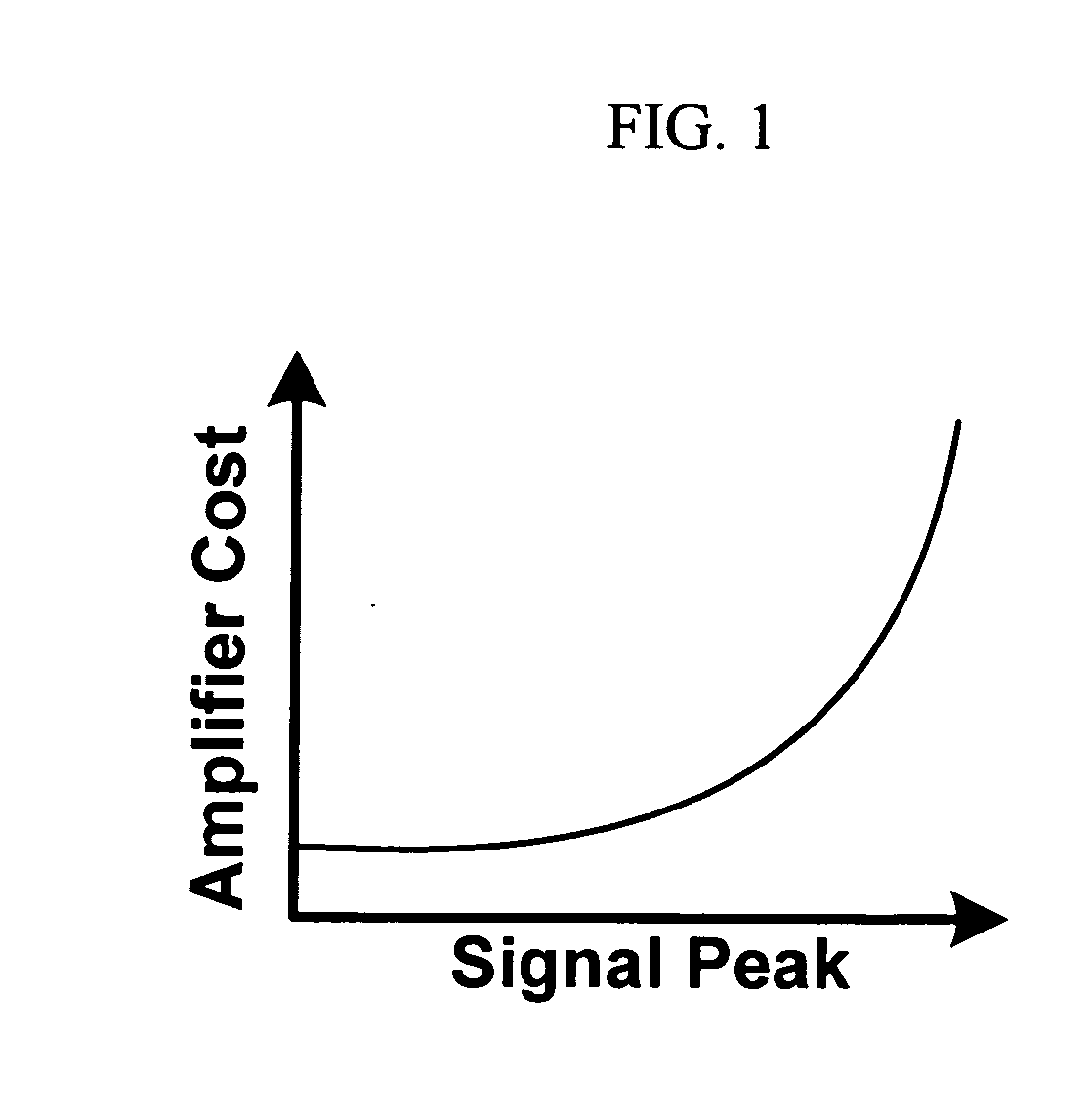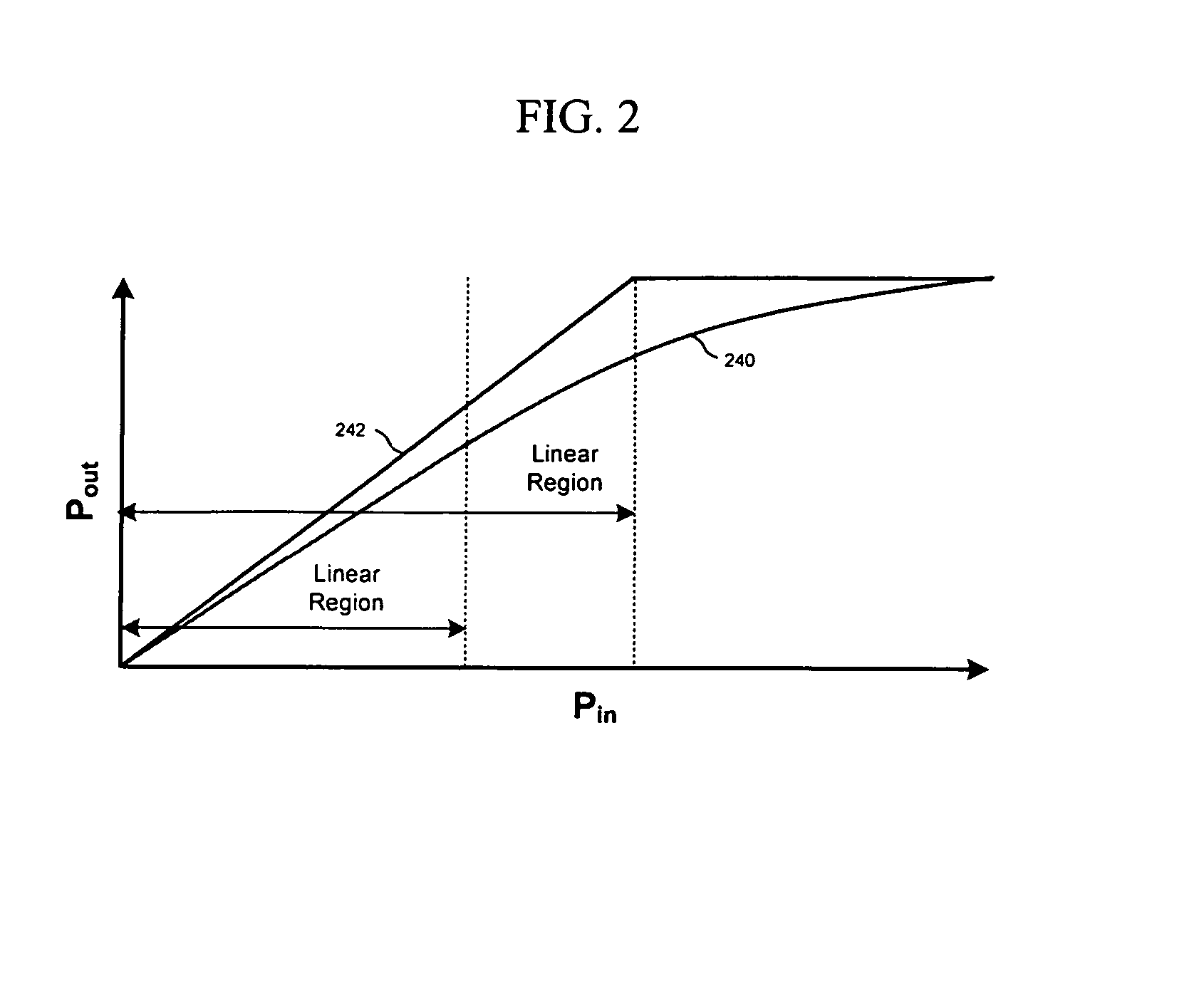Method and apparatus for adaptively controlling signals
a signal and adaptive control technology, applied in the field of signal transmission systems, can solve the problems of loss of information over the data link, exponentially increasing amplifier costs, and general dominance of package costs for low peak-power amplifiers, so as to improve peak reduction, optimize peak reduction, and improve peak reduction
- Summary
- Abstract
- Description
- Claims
- Application Information
AI Technical Summary
Benefits of technology
Problems solved by technology
Method used
Image
Examples
Embodiment Construction
[0059] The peak-reduction concepts of the present invention as discussed below are presented primarily in the context of MCS (typically four WCDMA channels), since it simplifies the discussion to treat a smaller number of signal channels. However, the peak-reduction processing concepts of the present invention are equally applicable to OFDM signals. Similarly, the discussion below is presented in the context of wireless communications systems. However, the peak-reduction processing concepts of the present invention are equally applicable to, for example, digital radio and television broadcast systems, including wired, terrestrial and satellite broadcast systems. The invention may, for example, provide benefits in the processing of any signal conveyed via variations in electromagnetic or acoustic fields. The inventive concepts may therefore be applied in optical data transmission and audio systems. The present invention thus includes within its scope the processing of signals, or app...
PUM
 Login to View More
Login to View More Abstract
Description
Claims
Application Information
 Login to View More
Login to View More - R&D
- Intellectual Property
- Life Sciences
- Materials
- Tech Scout
- Unparalleled Data Quality
- Higher Quality Content
- 60% Fewer Hallucinations
Browse by: Latest US Patents, China's latest patents, Technical Efficacy Thesaurus, Application Domain, Technology Topic, Popular Technical Reports.
© 2025 PatSnap. All rights reserved.Legal|Privacy policy|Modern Slavery Act Transparency Statement|Sitemap|About US| Contact US: help@patsnap.com



